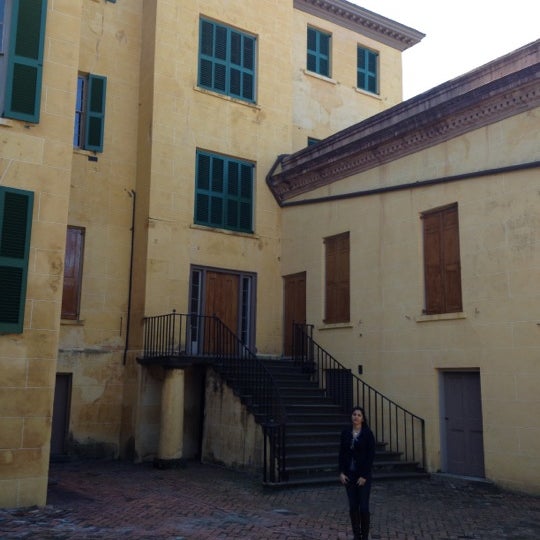Table Of Content

Most scholars of southern history and culture define antebellum plantation mansions being surrounded by agricultural developments, such as other Charleston area plantations, Drayton Hall, McLeod Plantation, and Magnolia Plantation. By the time that the American Civil War broke out, at least 13 enslaved people were at the Aiken property, including 6 children. The only surviving urban town-house complex, this 1820 abode gives a fascinating glimpse into antebellum life on a 45-minute self-guided audio tour. The role of slaves is emphasized, and visitors wander into their dorm-style quarters behind the house before moving on to the lifestyle of the rich and famous.
Walkable, Wonderful Charleston - The New Yorker
Walkable, Wonderful Charleston.
Posted: Thu, 13 Oct 2022 16:44:13 GMT [source]
Charleston's 19th Century Gem: The Aiken Rhett House
As DiNicola mentioned, the preservation of the home was both an inspiration and a challenge to designers, who were tasked with reimagining the halls without interfering with its fragile contents. The stable and rooms are part of the outbuildings at the Aiken-Rhett House, pictured March 15, 2024. For a third year, the Historic Charleston Foundation collaborated with a variety of designers to reimagine the historic halls of the Aiken-Rhett House. We are a federally-recognized 501(c)(3) nonprofit that works to preserve the history of South Carolina’s historic, natural, and cultural landmarks before they are lost to time. This website serves as a permanent digital archive of over 2,300 South Carolina landmarks – and counting.
Request a Digital Visitors Guide

There have been few alterations and you get it as is, peeling Parisian wallpaper and all. Find must-see attractions and long-distance travel resources, including visa information, regional overviews and tour operator credentials.
National Trust for Historic Preservation
The house and its outbuildings are one of the most complete and best preserved urban domestic complexes of the antebellum era. Charleston merchant John Robinson built the house in 1820 as a typical Charleston double house. When he lost five ships at sea in 1825, he was forced to sell the house to meet his financial obligations. Pieces of furniture, paint and other architectural elements have been untouched since the 19th century. As visitors step through its doors, they are transported to the antebellum South, an era marked by its lavish grandeur, intricate societal norms, and pivotal moments that would shape the nation’s future.
Request a Visitors Guide
Welcoming visitors to the whimsical space were larger-than-life frog statues stationed in corners of the dining room, shrouded by live oak branches, marsh grasses and ferns. The preserved elements served as an inspiration to interior designers, like Rebecca Gardner of Houses and Parties, whose team transformed the dining room into a party fit for a king, or rather, a Frog Prince. Constructed in 1820 by John Robinson, a wealthy merchant, the home on Elizabeth Street later housed South Carolina Gov. William Aiken and his family.
Connection to Aiken, South Carolina
The original staircase which was smaller and less ornate, though still detailed, became the back stairwell. The passageway is an ornate Gibbs surround made out of marble with a mahogany door outfitted with a semicircular fanlight and sidelights with decorative grillwork. William Aiken, Jr. died in 1887 at his summer home in Flat Rock, North Carolina. Her daughter, Henrietta, and son-in-law, Major A.B. Rhett, raised their four sons and one daughter in the house.

The house and its surviving furnishings offer a compelling portrait of urban life in antebellum Charleston, as well as a Southern politician, slaveholder and industrialist. The house spent 142 years in the Aiken family's hands before being sold to the Charleston Museum and opened as a museum house in 1975. While touring the house, you will discover the illustrious family history and gain an authentic 19th-century experience. As you stroll through the house and adjacent grounds with the original stables, kitchens, and slave quarters, you'll see the original paints and floors, bringing to life the conditions of those who lived there.
Aiken used the home as a rental property until his death in 1831, when his assets were divided between his wife and his only son, William Aiken, Jr., was a successful rice planter who would later become a prominent statesman and governor of South Carolina. He and his wife, Harriet, moved into the house in 1833 and began an extensive renovation of the property. One of the reasons that there are so many magnificent homes in Charleston is that in the 1800s, wealthy Charleston families saw their houses not only as the center of their family life but as the hub of their social life as well. The homes were show pieces meant to display the family's status to their guests. The Aiken house was no exception, and Aiken Jr. made major renovations to the home, including moving the front entrance and building a large addition, calculated to make the home more impressive.
responses to “Insight into Lives of the Enslaved at ARH”
While the Nathaniel Russell House has been restored to the way it would have looked in the 19th century, using reproductions and modern craftsmen to replicate damaged décor, the Aiken-Rhett House takes a preservation-based approach to protecting the property. The visual effect might not be as striking as the brightly colored walls and faux marble of the Nathaniel Russell House, but seeing the original, untouched detailing in the Aiken-Rhett House is absolutely fascinating. The Aiken-Rhett House is one of the best places in Charleston to get a feel for what life was like in the Holy City in the 19th century. Unlike many of the historic homes in Charleston that have been through numerous renovations and alterations over the years, the Aiken-Rhett house has not been significantly changed since 1857, making it a virtual time capsule of 1800s architecture.
Beyond its architectural significance, the Aiken-Rhett House provides profound insights into the daily lives of its inhabitants, both free and enslaved. The main house, with its grand drawing rooms and bedchambers, showcases the luxury and privilege enjoyed by the Aiken family. In stark contrast, the preserved outbuildings, including the original slave quarters, shed light on the lives of the enslaved Africans and African Americans who worked and lived on the property. This juxtaposition paints a comprehensive picture of Charleston’s societal structure during the antebellum period. 1820, the Aiken-Rhett House is the most intact townhouse complex showcasing urban life in antebellum Charleston.
The home was sold to the Charleston Museum in the 1970s and acquired by the Historic Charleston Foundation in 1995. You may wonder, does this Aiken family legacy have a connection to Aiken, South Carolina? The president of the South Carolina Canal and Railroad Company was none other than William Aiken, who first purchased the house from John Robinson. The town of Aiken, SC, is famous for this railroad and the Battle of Aiken that happened near the end of the Civil War on February 11, 1865. After William died in 1887, the Charleston mansion was left to his wife and daughter. Once his wife passed in 1892, his daughter, Henrietta, and her husband lived in the residence with their five children.

No comments:
Post a Comment